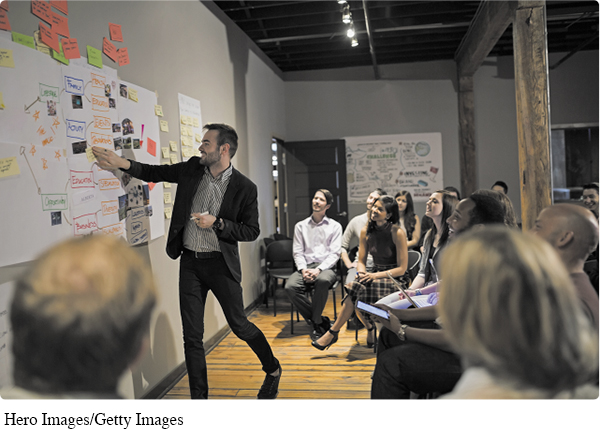11.3 How Small Groups Communicate
Groups achieve their stated goals when members communicate in a cooperative and productive fashion. You can help the group build and maintain positive relationships by understanding how group roles work and adapting your communication to foster group unity.
As the chapter opener illustrates, Pixar Studios relies on teamwork to produce movies. These teams produce good stories by fostering competent communication and participation. Each member of the project, including the director (or leader), communicates as part of a team, with scriptwriters, visual artists, and animators performing clear tasks and contributing throughout the production process so that the film will be ready on time for distribution in theaters.
One way that Pixar encourages team communication is by scheduling meetings known as “dailies.” Dailies are meetings during which animators show work in progress, often leading to script rewrites and drawing revisions. These meetings can be characterized by singing ’80s songs, addressing team members by nicknames, and, most importantly, offering honest and specific feedback on project ideas (Catmull, 2014). While some parts of dailies may seem silly, these activities are what build supportive relationships on the team. Because the team gives equal attention to building supportive relationships as it does to communicating about tasks, Pixar ensures a climate of creativity and excellence.
271
Like the teams at Pixar, many successful small groups meet frequently not only to share ideas and assess in-

The success or failure of any small group is largely attributable to how members communicate with one another. Setting the stage for competent communication can be accomplished in five ways: balancing group roles, building cohesiveness, establishing positive norms, sharing leadership responsibilities, and managing physical space.